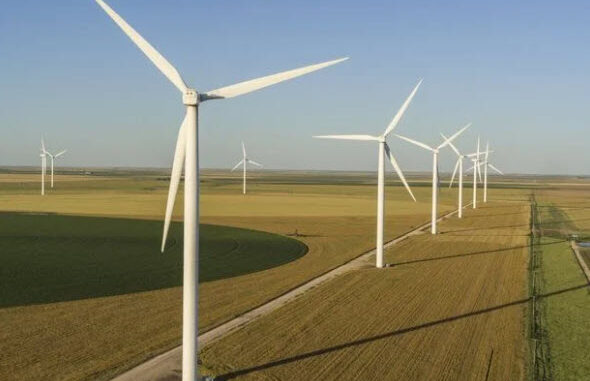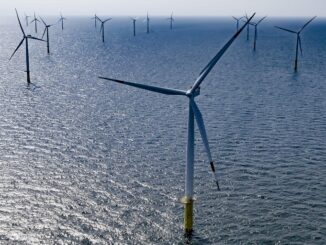
AUSTIN, Texas—The Texas wind industry suffered a devastating financial blow during last month’s electricity crisis, which hit roughly half of the state’s wind farms and may force some to seek bankruptcy protection or relinquish control to Wall Street.
With ample breezes and open spaces, the Lone Star State has become the biggest producer of wind power in the U.S. It now derives roughly 23% of its power on an annual basis from the renewable energy source.
But a financial arrangement that helped wind companies thrive in Texas now threatens to crush many operators, after an unusually strong winter storm led officials to drastically raise wholesale prices in the state’s deregulated power market and caused blackouts that left millions in the dark for days.
Many wind farms in Texas, to get construction financing, enter into long-term hedged contracts with financial institutions in which the wind farm operator agrees to provide a steady stream of electricity to the counterparty.

If it cannot deliver electricity—because the wind isn’t blowing—the operator agrees to pay to purchase electricity on the wholesale market, or agrees to pay the counterparty to purchase it on its behalf.
In return, the financial institution, often a Wall Street bank, agrees to pay a set price for the electricity. The bank can then resell the electricity on the state’s wholesale power market, potentially clearing a profit.
When the wind is still and operators need to purchase power to fulfill their obligations, it typically costs somewhere between $0 and $50 per megawatt hour. But during the February blackouts, when some wind farms stopped running after ice built up on their fan blades, operators were forced to pay $9,000 a megawatt hour. (The average price in 2020 was $22.18.)
Over a four-day span at such prices, a midsize wind farm could easily end up owing $50 million or more for electricity.
Wind farms that owe their counterparties more than they can pay may be forced to seek bankruptcy protection or work out an arrangement.
Alternatively, the Wall Street banks could go after the only asset available for repayment: the wind farm itself. The gallows-humor joke in the wind industry this week was that Wall Street could soon become the biggest wind player in Texas.
Power prices skyrocketed in the state after the Texas Public Utility Commission, a three-member panel appointed by Texas Gov. Greg Abbott, set them at $9,000 per megawatt hour to try to spur power plants to make more electricity.
The move didn’t result in generators producing more, however, as dozens of power plants and wind farms were down due to the freeze and a corresponding shortage of natural gas.
In a filing with the Texas PUC, representatives of nine renewable-energy generators—including wind farms owned by BlackRock Inc., Danish investment fund Copenhagen Infrastructure Partners, Swiss asset manager Capital Dynamics and Algonquin Power & Utilities Corp. —asked the state this week to reprice the power market between Feb. 15 and Feb. 19, the height of the blackouts.
If nothing is done to unwind the power prices, they wrote, at least 46 projects totaling nine gigawatts of capacity “would suffer severe financial losses.” There are 31.9 gigawatts of wind power on the main Texas grid, and half or more were financed with hedged contracts, according to market observers.
The PUC didn’t respond to a request for comment.
A renewable-energy investor whose firm participated in this filing said “if there is not a fix, a lot of investors will not continue to invest in Texas. The risk is too high. The market is too volatile.”
The wind farms that had to purchase power for days at the record-setting $9,000 per megawatt hour price—the highest allowable under the Texas rules—effectively wound up owing more money than some of the farms are worth.



